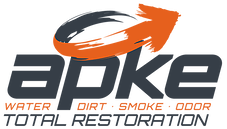Experiencing a fire, even a minor one, can feel overwhelming. The initial shock often gives way to a pressing need to repair and restore your home to its former state. It’s not just about fixing what’s broken; it’s about making your space feel safe and comfortable again. Imagine the warmth of walking back into your freshly restored home, free of the smell of smoke and the sight of soot-streaked walls. This vision is possible with understanding and the right actions.
For residents of Cincinnati, where older homes are often enhanced with unique architectural details, knowing how to handle fire damage effectively is crucial. Repairing fire damage isn’t something you want to delay. Understanding the steps involved can ease the process, leading to a quicker restoration and making your home feel like yours again.
Assessing the Damage
After the fire is out and it’s safe to re-enter your home, the first step is assessing the damage. This process is vital for creating a clear plan of action. Here’s what you need to do:
– Wait for Clearance: Before you head back in, ensure officials have declared the structure safe.
– Survey Affected Areas: Walk through each room noting visible damage. Check for soot-covered walls, charred items, and signs of water damage.
– Document Everything: Take photos and write down the condition of each area. This documentation helps with insurance claims and guides your restoration efforts.
– Look for Structural Damage: Pay attention to floors and ceilings as they may have weakened. It might not be visible immediately, so keep an eye out for sagging areas or unusual creaks.
During your assessment, prioritize safety. Wear a mask to minimize inhaling soot particles and ensure proper ventilation. If you spot anything that looks dangerous, such as hanging wires or the smell of gas, leave the premises and contact professionals for help.
By understanding how to effectively assess the damage, you’re setting up a solid foundation for restoring your home. With this groundwork, you can move forward, tackling each step in the process with greater confidence and clarity.
Cleaning Up: Smoke and Soot Removal
After understanding what needs fixing, the next hurdle is cleaning up smoke and soot. These elements can stain fabric and paint, leaving a nasty reminder of the fire. To tackle this effectively, you’ll need a plan.
Start by gathering the right tools and cleaners. Look for those specified for smoke and soot, as they’ll be more effective than regular household cleansers. For walls and ceilings, gentle scrubbing with a solution of mild detergent mixed with warm water can help lift the soot without damaging the paint. Be patient, as severe cases might require several passes.
For stubborn spots, consider different options:
– Trisodium Phosphate (TSP): This is a powerful cleaner that works well but should be handled with care. Follow the product instructions closely for safety.
– Vinegar Solution: A mix of vinegar and water can also help neutralize lingering smoke odors.
– Professional Tools: If smoke odors linger, consider renting air scrubbers or ozone machines, which purify the air and neutralize smells at the source.
Ventilation is key. Keep windows open to help air out the space, and use fans to circulate fresh air. This reduces the concentration of smoke particles and helps clear unpleasant smells faster.
Repairing and Restoring Affected Areas
Once cleaning is complete, focus shifts to repairing and restoring your home. Here’s a handy guide to get started:
1. Walls and Ceilings: Check for bubbles or cracks in paint, as they may need sanding and fresh coats. For severely damaged areas, new drywall might be necessary.
2. Floors and Carpets: Replace any scorched or water-damaged sections. Wooden floors might need to be sanded and refinished, while carpets may need deep cleaning or replacement.
3. Fixtures and Fittings: Lights, switches, or counters that melted or charred require replacement. Take this opportunity to upgrade to fire-resistant materials where possible.
Additionally, don’t overlook potential water damage from firefighting efforts. Inspect and dry out damp areas promptly to prevent mold.
Preventative Measures and Future Safety
Once your house is back in shape, introduce preventative measures to guard against future fire risks. Installing smoke detectors and fire alarms can safeguard your family and offer peace of mind. Consider the following steps:
– Install More Alarms: Make sure smoke detectors are in key areas like bedrooms and the kitchen.
– Regular Checks: Test alarms monthly and change batteries twice a year.
– Fireproof Your Home: Use fire-retardant materials for curtains and upholstered furniture.
– Emergency Plan: Practice fire drills with your family so everyone knows what to do in an emergency.
Following these steps can greatly reduce the chance of fire-related incidents at home. They can also ensure any fire that’s unfortunate enough to occur is caught as early as possible, minimizing damage and helping everyone stay safe.
Recovering from a fire can seem like a mountain to climb, but with careful steps and the right help, your home can be as welcoming as ever. For more details on how to restore your home effectively, consider exploring our comprehensive fire damage restoration services in Cincinnati. Apke Total Restoration is here to assist you in bringing back comfort and safety to your living space.
